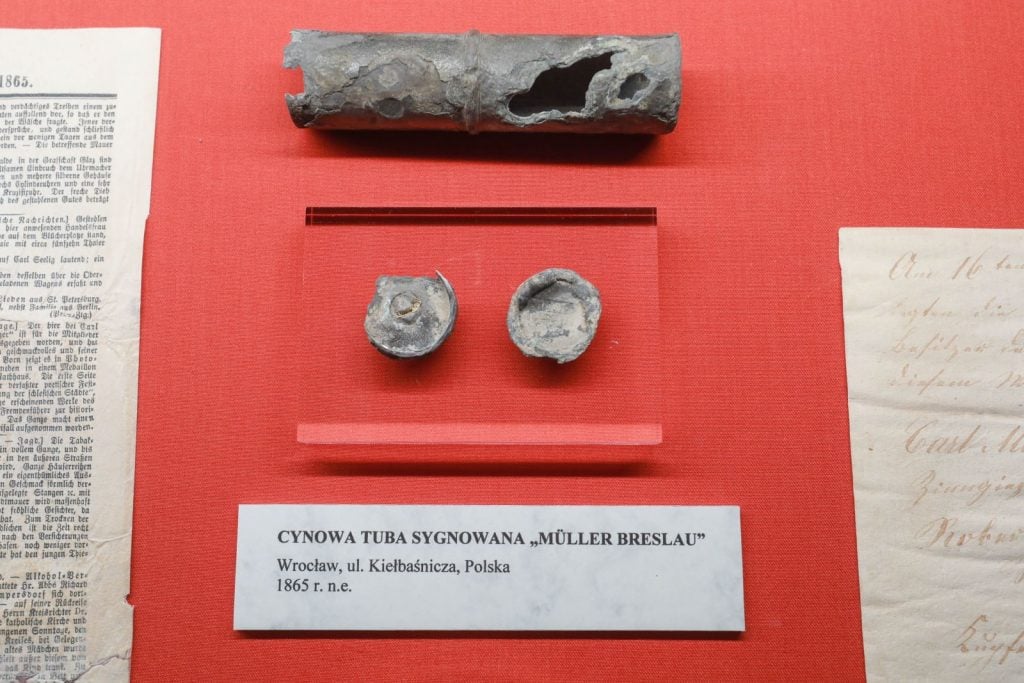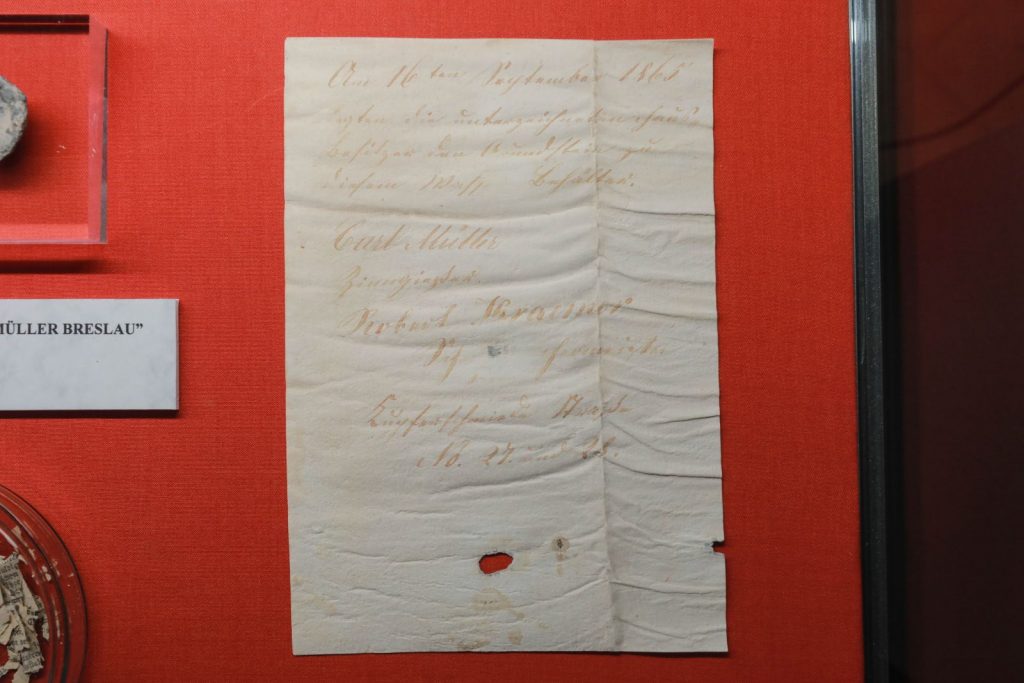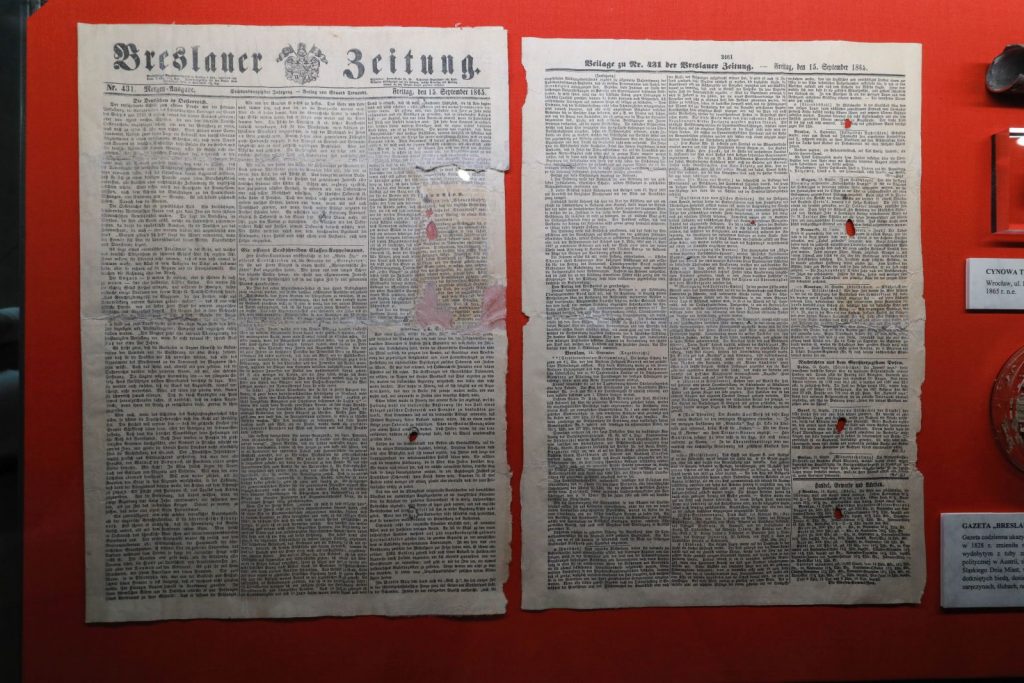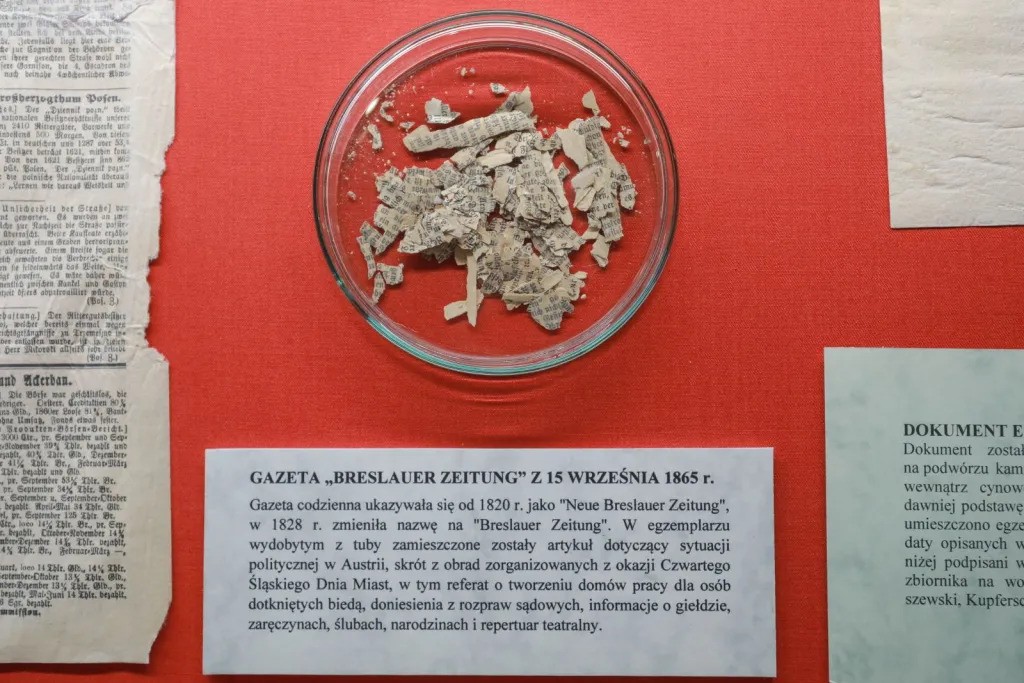Archaeology & History
A Metal Tube in a Polish Museum Turns Out to Be a 150-Year-Old Time Capsule
It contains rare missives from over a century ago.

For decades, a metal tube discovered on a street in Poland sat undisturbed in a museum. A recent study of the object, however, has found that it is more than a humble tube, but a time capsule containing missives from more than a century ago.
According to a press release from Poland’s Ministry of Science and Higher Education, the capsule was first discovered by archaeologists in the mid-1990s during a field study on Nożownicza Street. It remained at the Archaeological Museum in Wrocław for years until specialists from Ossolineum, a Polish cultural foundation and research center, realized there was something inside the tube and opened it.
“Inside was a manuscript signed by three Wrocław residents from Nożownicza Street, commemorating the moment of hiding this time capsule,” said Maciej Trzciński, head of the Archaeological Museum in Wrocław. “To mark this moment, they also included a copy of the 1865 Breslauer Zeitung newspaper.

Objects found inside the 1865 time capsule in the Archaeological Museum in Wrocław. Photo: PAP/Krzysztof Cesarz.
Rolled up inside the tube, the handwritten note signed by three neighbors read: “On September 16, 1865, the undersigned house owners laid the cornerstone for the construction of a water tank.”
The accompanying newspaper, dated September 15, 1865, included articles discussing the political situation in Austria, the creation of workhouses for the poor, information on the stock exchange, a local theater’s repertoire, as well as announcements of engagements, weddings, and births. The daily newspaper was first published in 1820 as Neue Breslauer Zeitung before it was rebranded as Breslauer Zeitung in 1828.

Objects found inside the 1865 time capsule in the Archaeological Museum in Wrocław. Photo: PAP/Krzysztof Cesarz.
According to Katarzyna Kroczak, chief conservator of collections at the Ossolineum, the process of opening the fragile artifact was a tricky one. “First, we had to disinfect the capsule and then carefully consider how to handle the delicate papers inside,” she said.
The find, the team noted, was incredibly noteworthy, as it is rare to identify individuals alongside archaeological discoveries.

Objects found inside the 1865 time capsule in the Archaeological Museum in Wrocław. Photo: PAP/Krzysztof Cesarz.
“In this case, we can link the items to specific people who left behind not only this trace but also other archival records,” said Agata Macionczyk from the Wrocław museum. With this information, researchers could reconstruct the lives of the Polish residents over a century and a half later.
The discovery now serves as a reminder of Wrocław’s final renovations of its medieval water supply system. Some years after the capsule was buried, construction of a more modern water supply system to replace the medieval one began.
The time capsule and its contents are now on display at the Archaeological Museum in Wrocław.





